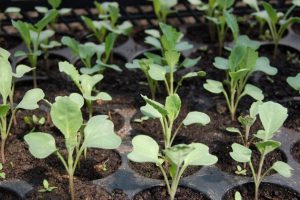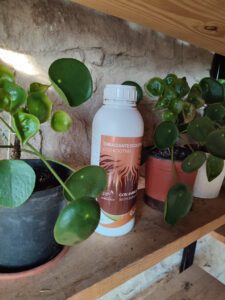What is the RED SPIDER?
The red spider mite is a phytophagous mite that causes very serious damage to our horticultural, extensive, citrus and grapevine crops, as well as to ornamental plants.
They feed directly on the sap of plants, causing significant damage. In our country, it is estimated that between 15 and 20% of crop pest damage is caused by mites.
They begin to increase their populations in spring and in summer they complete a generation in little more than a week. In areas with mild winters, generations may be occurring uninterruptedly throughout the year. This pest prefers a warm, dry climate.
Why DOES spider mites COME OUT on our plants?
High temperatures and a dry environment are the most optimal conditions for a spider mite population to develop rapidly. When a plant is weak, it is more prone to attack by this mite.

How does spider mite AFFECT our plants?
Larvae, nymphs and adults cause damage to plants by feeding on their sap. They are usually found on the underside of leaves, where they perforate the cells to suck out their contents. Empty dead cells turn yellow and in many plants the damage is also observed in the upper layer of the leaves, as yellow dots. Cell destruction decreases photosynthesis, increases transpiration and reduces plant growth.

As damage increases, leaves turn yellow and, as more sap is lost, necrosis of the plant eventually occurs. In tomato and cucumber, damage of 30% of the leaf surface can cause crop loss. Nymphs and adults spin webs, in which the mites live, and plants can become completely covered with these webs. Spider webs and leaf spots affect appearance and this is of particular concern in ornamental crops.
How to ELIMINATE spider mite naturally?
PREDATORS OF SPIDER MITES
- PHYTOSEIULUS PERSIMILIS is the best known natural enemy used in the control of spider mites in numerous crops, mainly in greenhouses and indoors. It is the best-selling predator for spider mite control because it feeds only on spider mites. If there is a shortage of prey, they may cannibalize and disappear. It has excellent mobility, even when there are spider webs in the crop. Its ideal working conditions are high relative humidity and temperature range around 20-25 degrees Celsius.
- AMBLYSEIUS CALIFORNICUS is a species typical of Mediterranean climate regions. In Spain it is widely distributed along the Mediterranean coast, and can appear in horticultural, industrial, fruit and citrus crops, and to a lesser extent in grapevines. It is the most common in winter crops in the southeastern peninsular.
- FELTIELLA ACARISUGA larva is a red spider mite predator of almost cosmopolitan distribution that is used to reinforce the fight of the aforementioned predatory mites Amblyseius californicus and Phytoseiulus persimilis against phytophagous mites of the genus Tetranychus (red spiders). It far exceeds the spider mite search capacity of other natural enemies due to the mobility of the adult stage, so it is indicated in larger plantations or where the pest is delocalized or in colonies.



